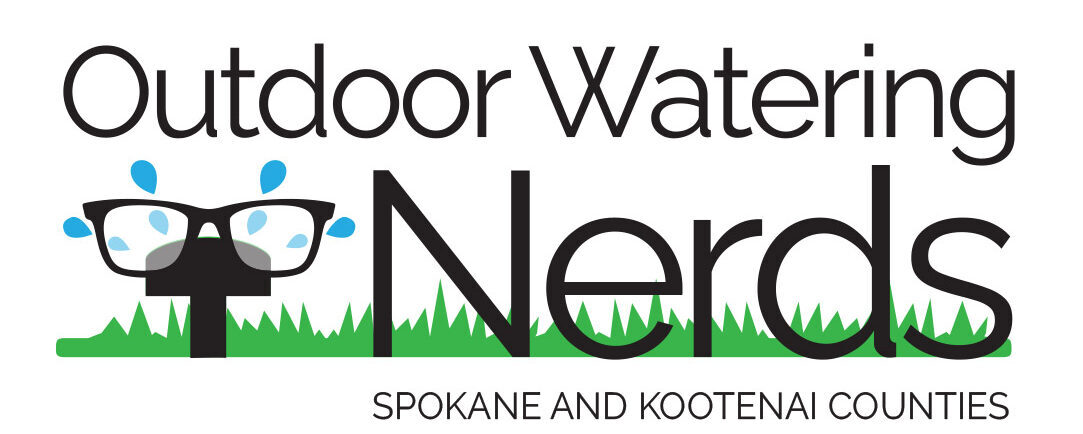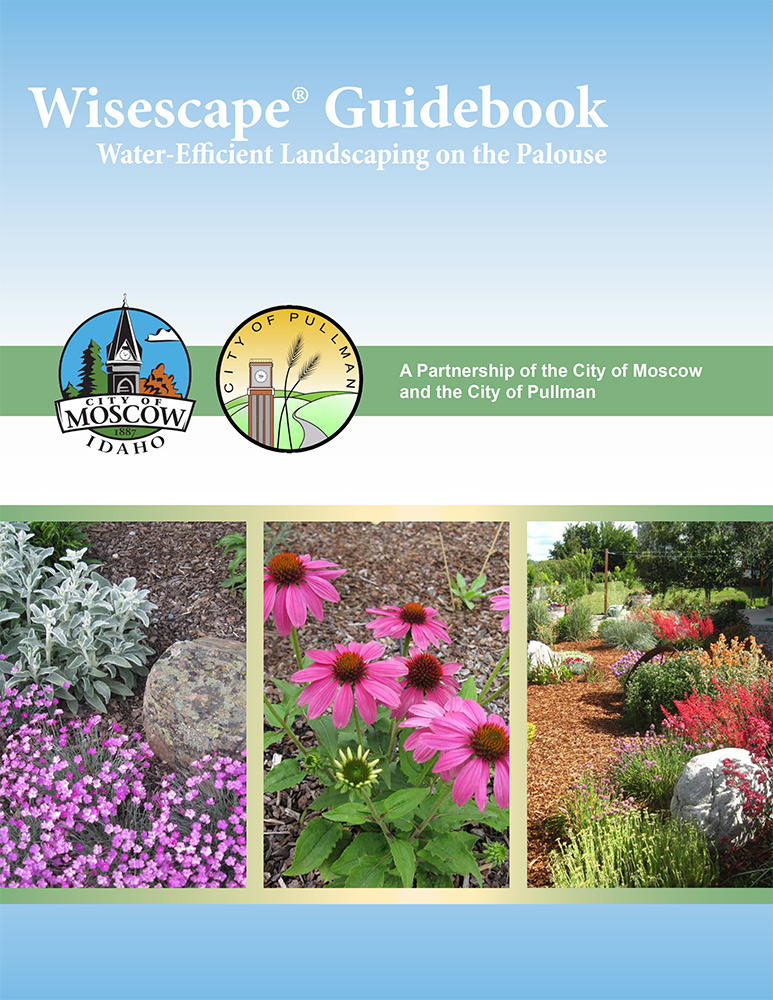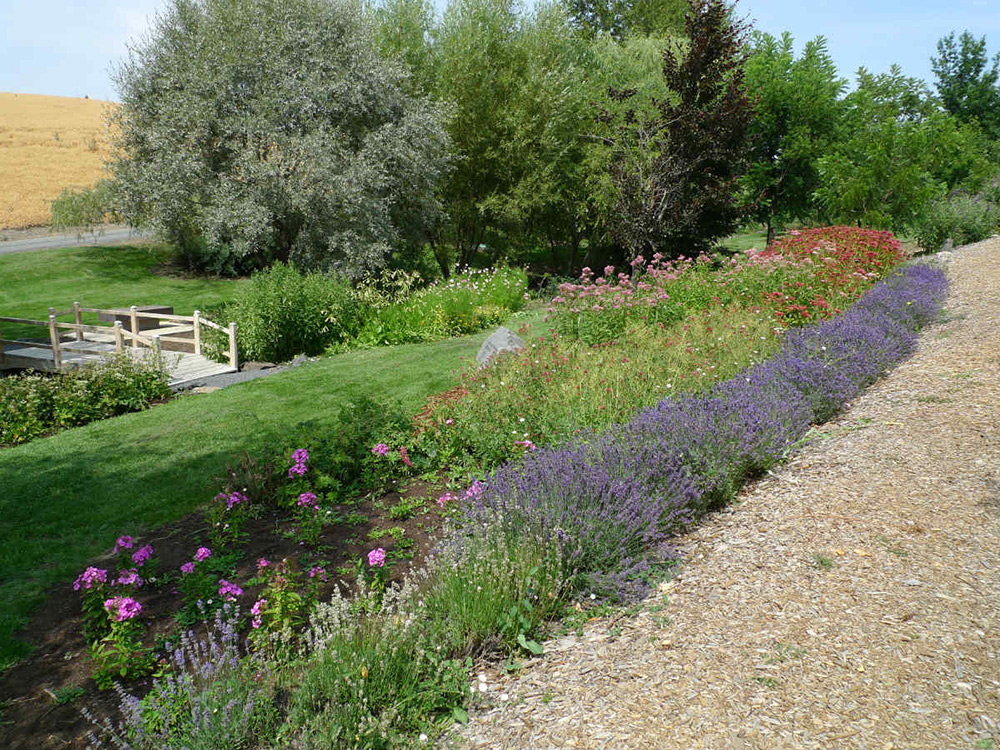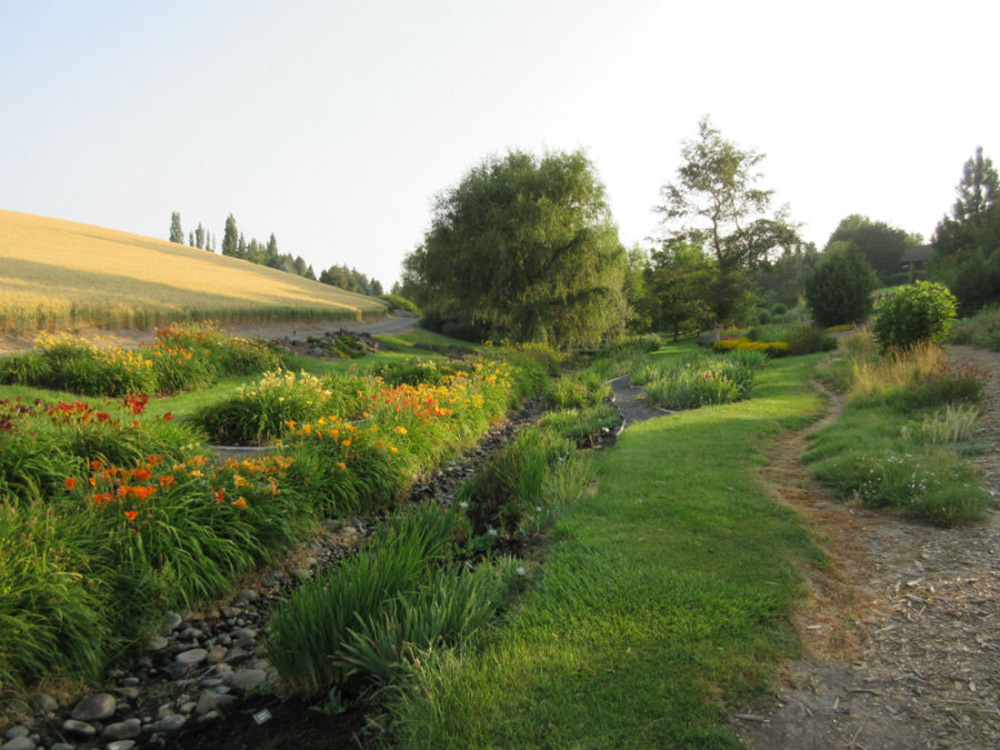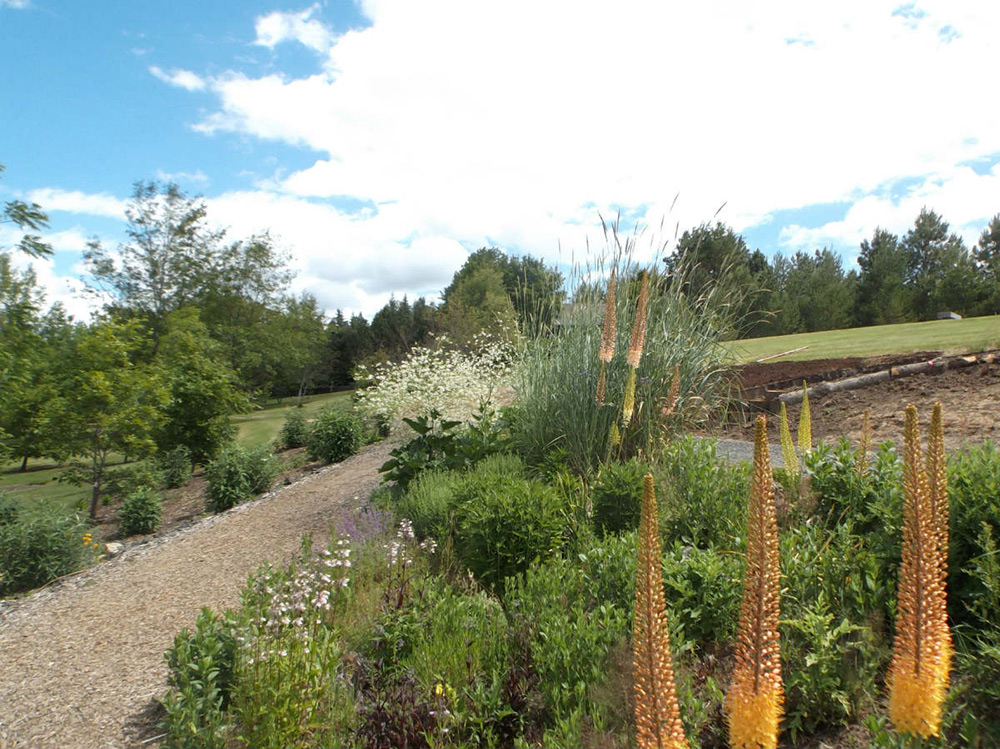Wisescape
The City of Moscow, Idaho established the Wisescape concepts in 2008 to promote water-efficient landscaping on the Palouse. The concepts include landscape design, reduction of resource use, soil enhancements, and plant selection.
Wisescape Guidelines
Design
- Aesthetically pleasing (Looks nice during various seasons)
- Practical (Designed for efficient resource use)
- Limit traditional Turf (Limited use of turf and/or water-conserving varieties)
- Plant zoning (Plants with similar needs together, appropriately placed)
- Efficient irrigation (Manual and/or automatic; creative capture/reuse systems as authorized)
Reduce Resource Use
- Water Savings (Reduced volume during peak season)
- Less mowing (Savings in energy and fuel; reduction in biomass for disposal)
- Labor savings (Savings in time and/or money)
- Fertilizer savings (Diminished leaching of fertilizer into surface and storm water systems)
- Pesticide savings (Diminished leaching of pesticides into surface and storm water systems)
- Reduction in yard waste (On-site retention and/or composting)
Soil
- Enhancements (Compost, mulches, etc.)
Plant Selection
- Site-appropriate plants (Suitably selected and placed with in landscape)
Wisescape Video
How do Wisescapes differ from Xeriscapes?
The term Xeriscape was created from the Greek word “Xeros” meaning dry and the word “Scape” from landscape. Xeriscaping is a strategy of sustainable landscaping that involves planting low water requiring plants. Through xeriscaping, individuals are able to save water, and therefore money. The cities of Moscow and Pullman built upon this concept to develop landscaping themes that work especially well with the unique environment within the Palouse.
Xeriscape Demonstration Garden
In 2001 the City of Moscow and the University of Idaho collaborated to create a Xeriscape demonstration garden located at the University of Idaho arboretum. The garden includes bunch grasses, brushes, flowers, turf grass, and a variety of other low water requiring plants available for public viewing.
